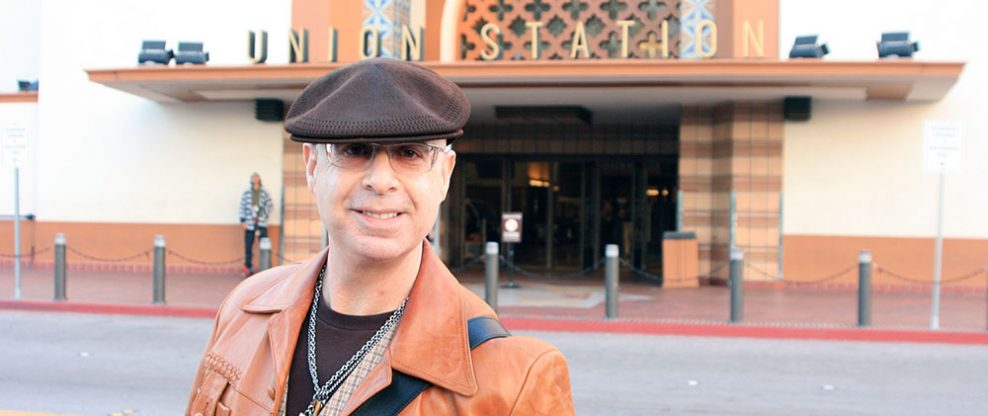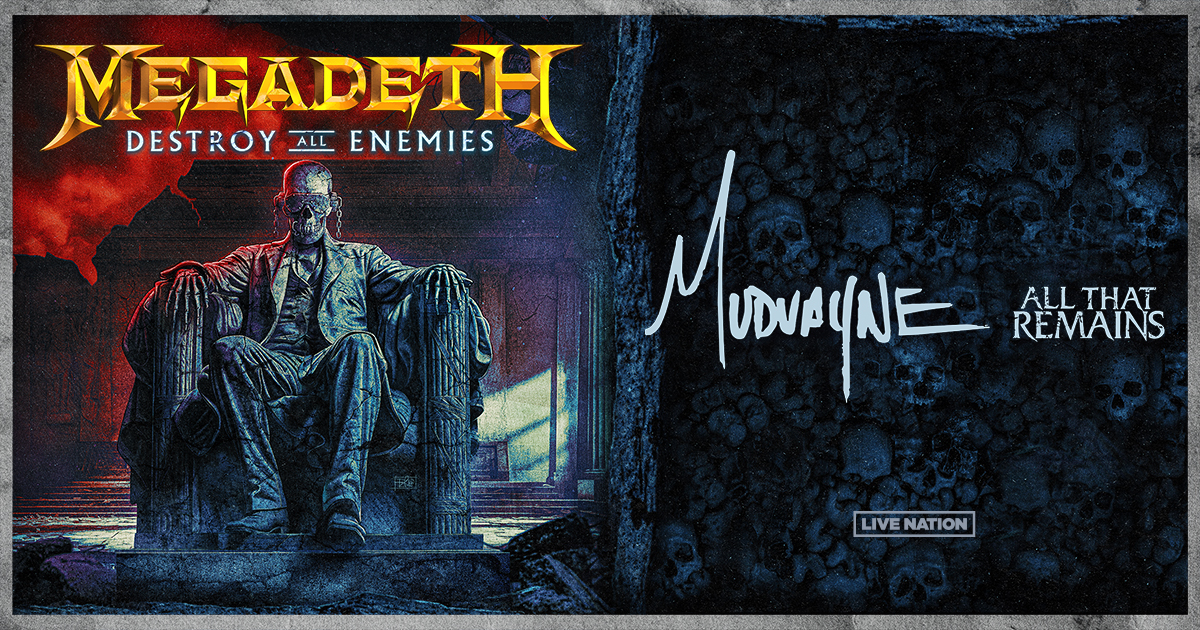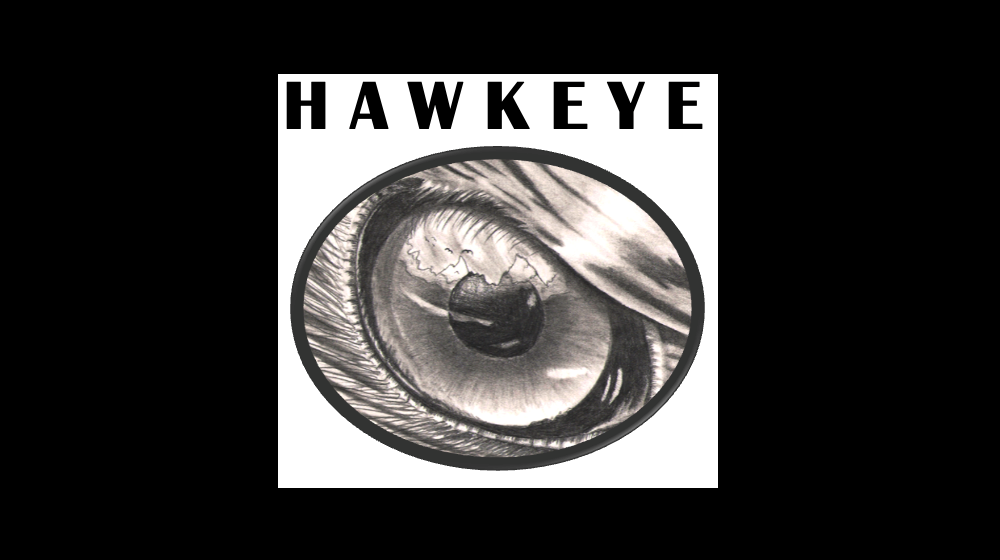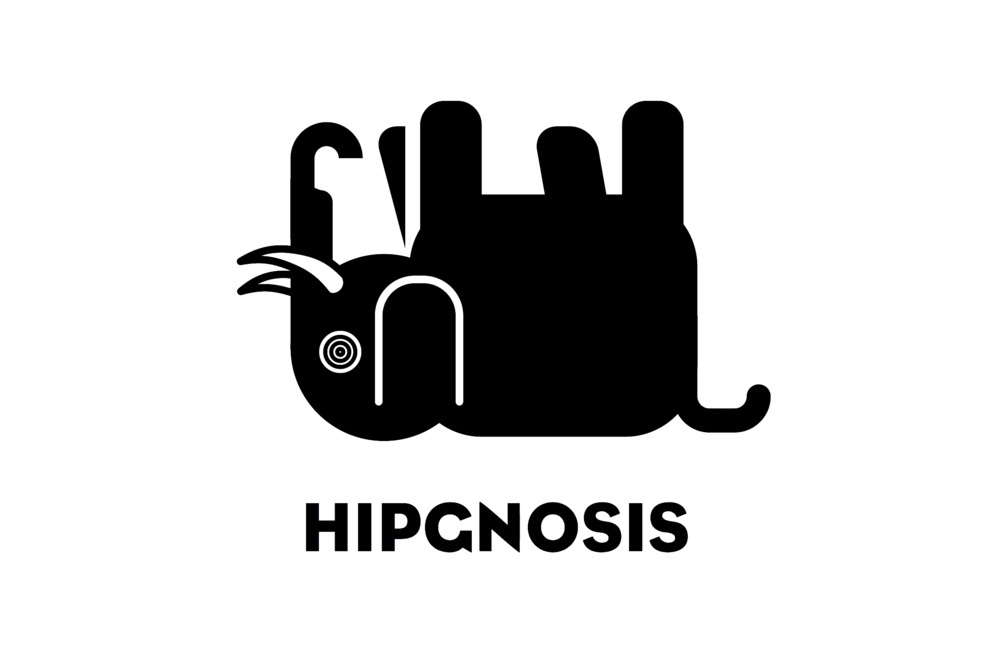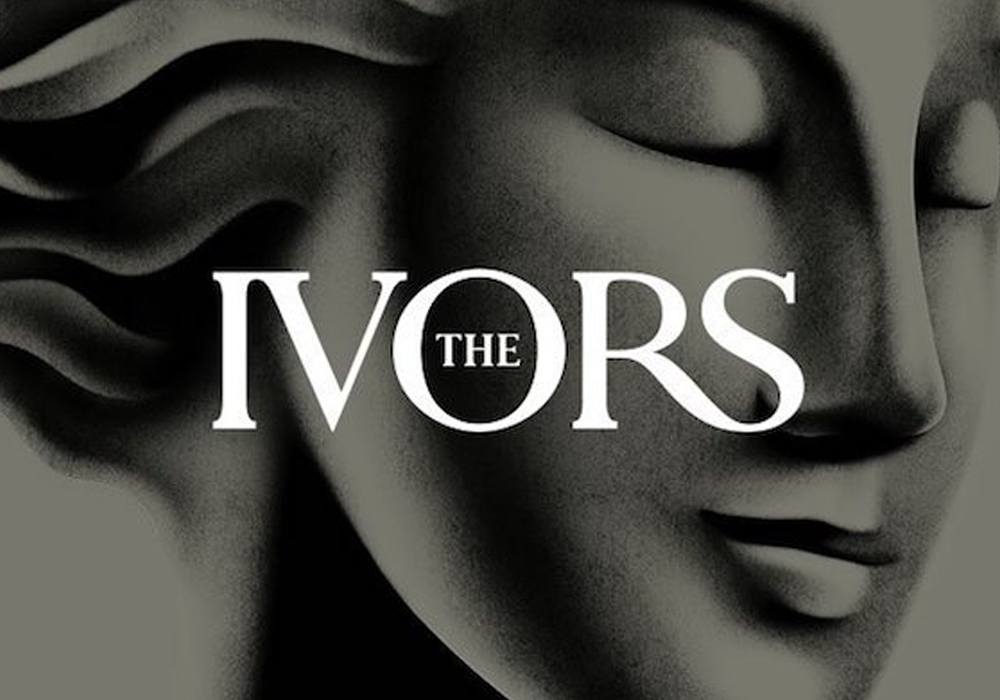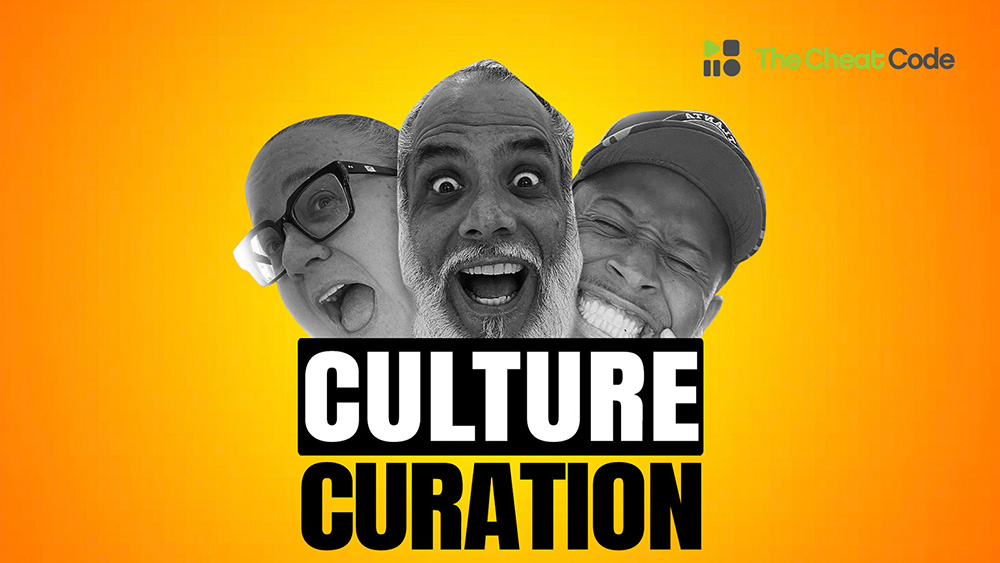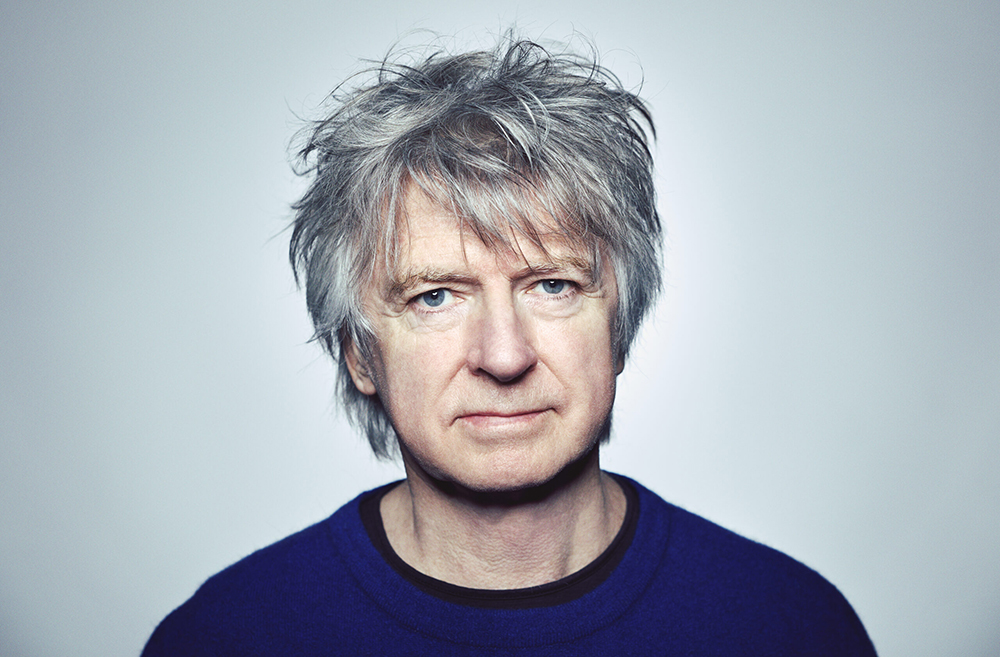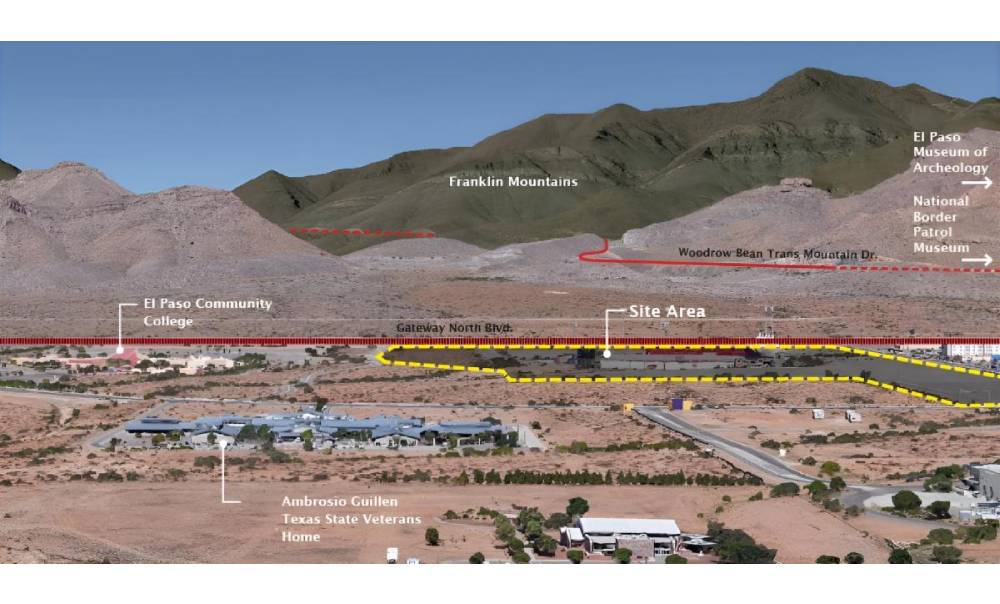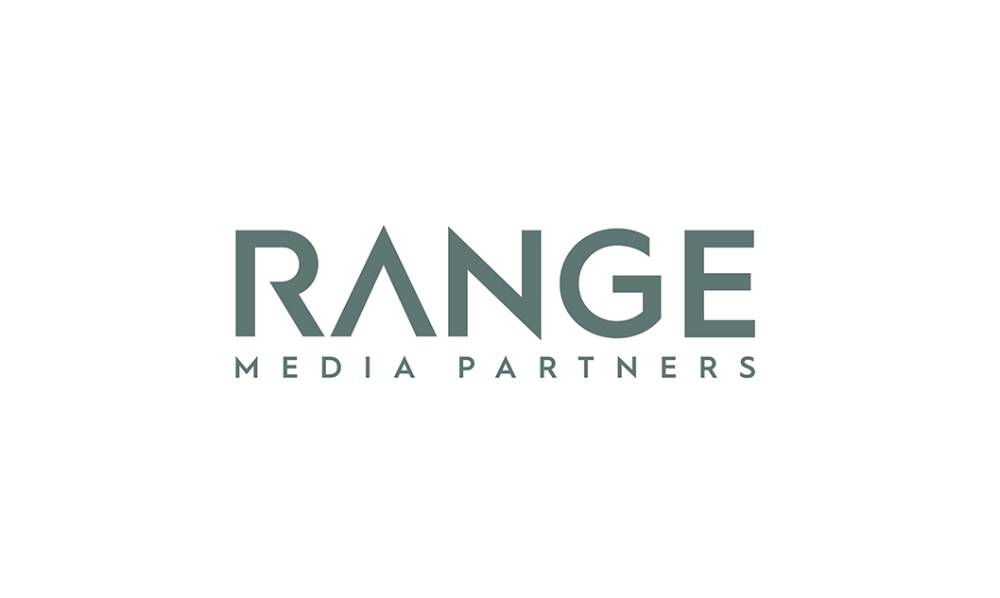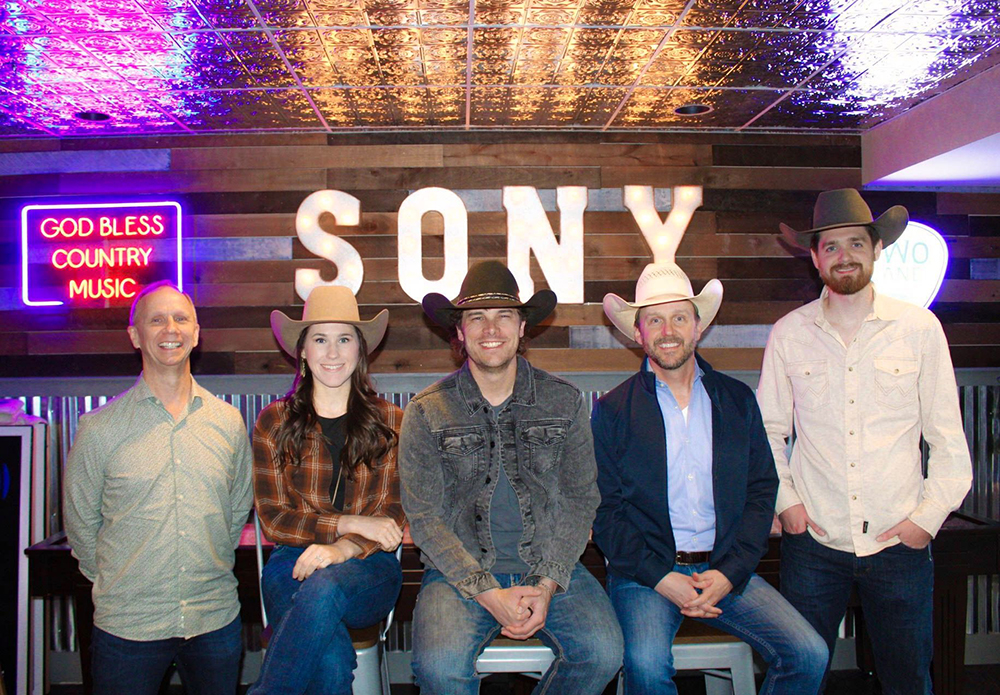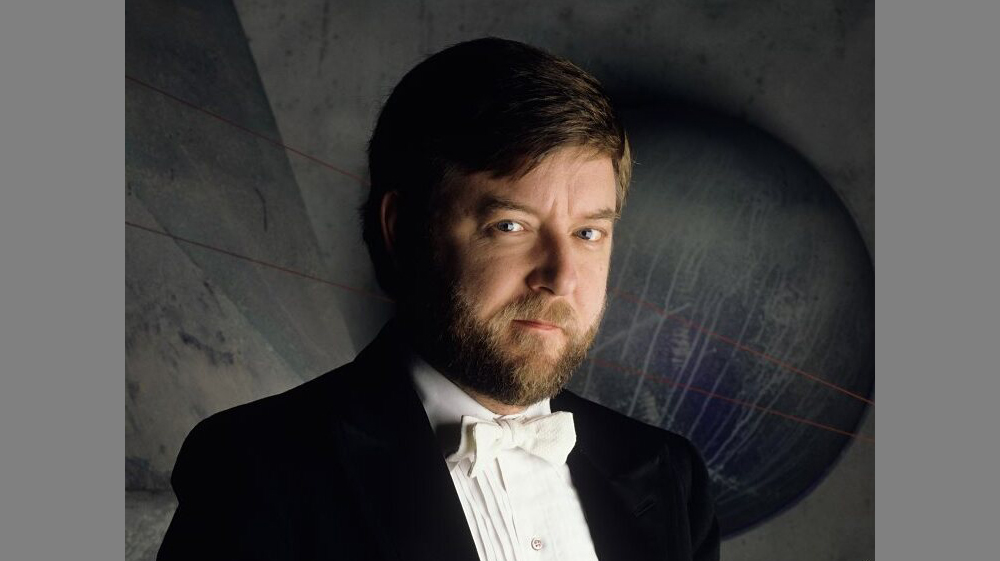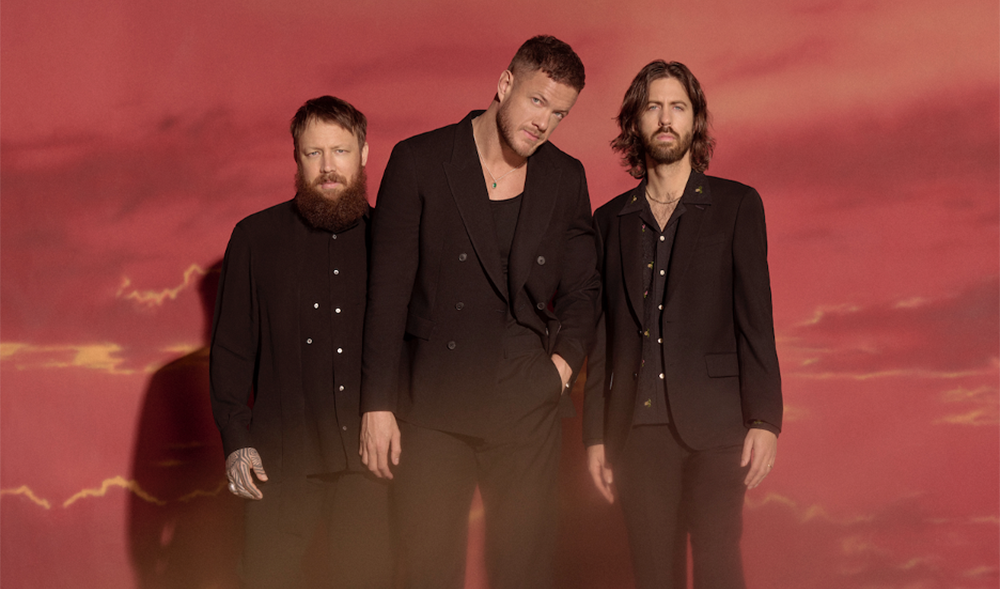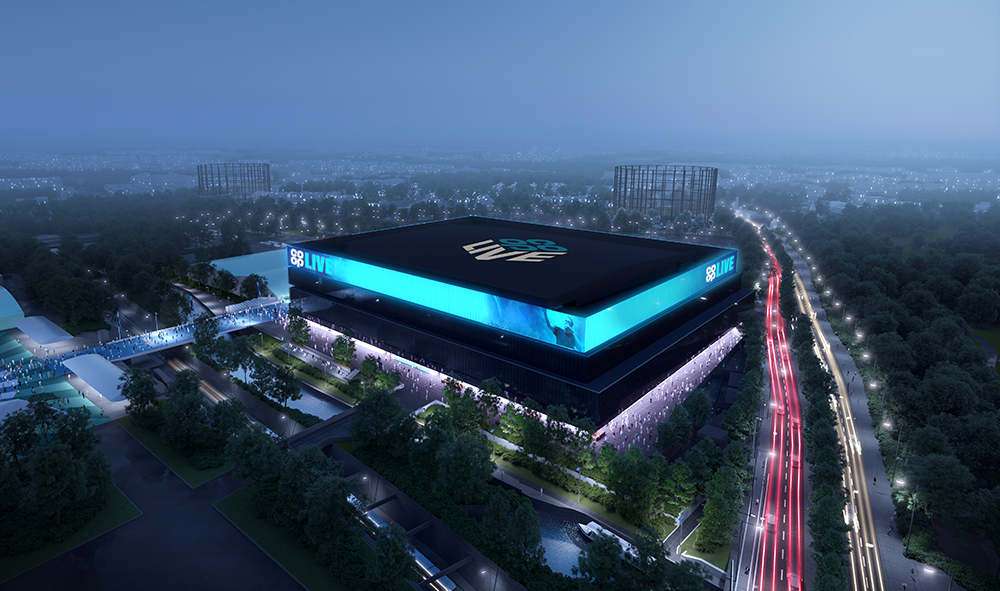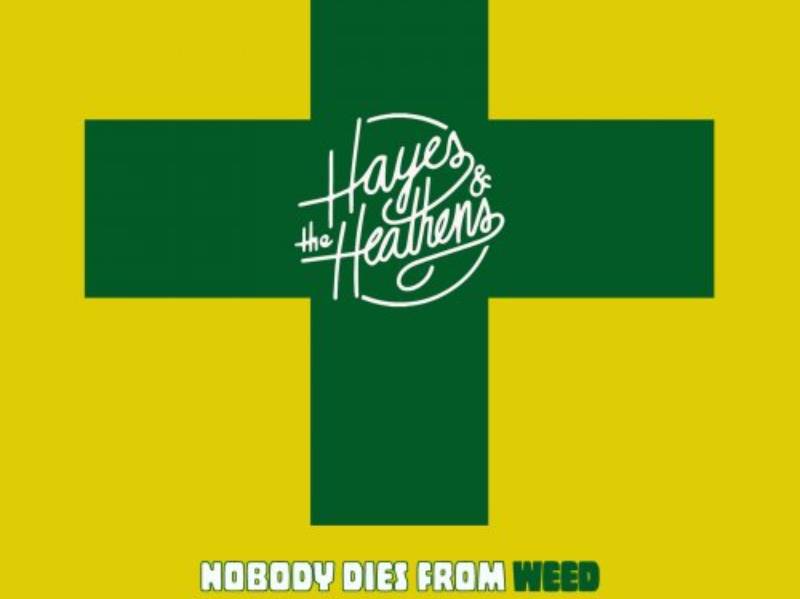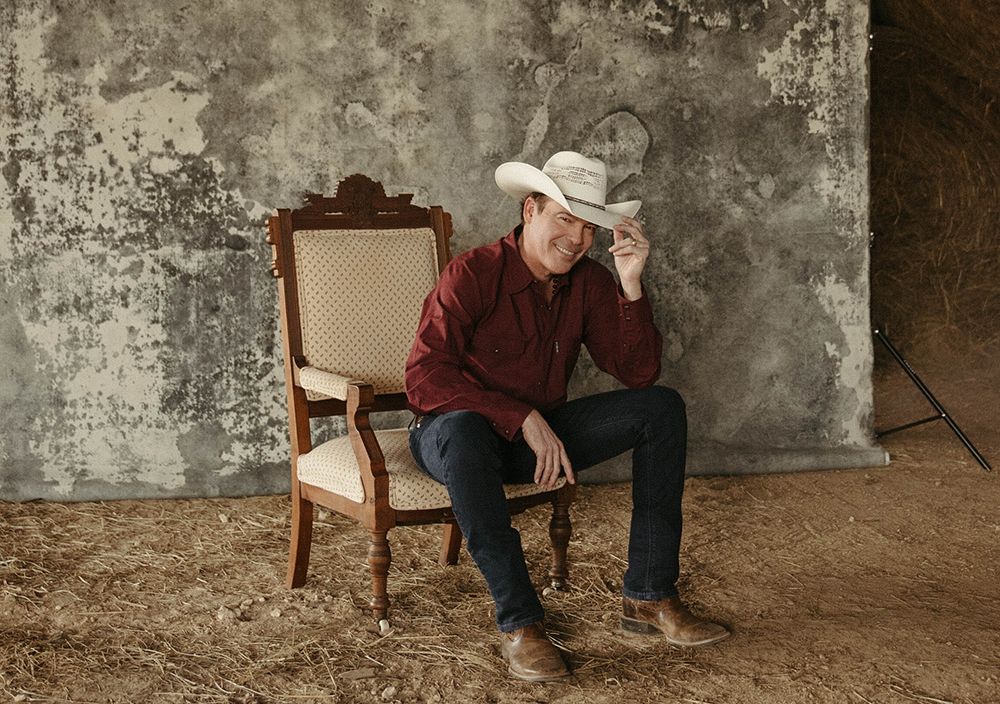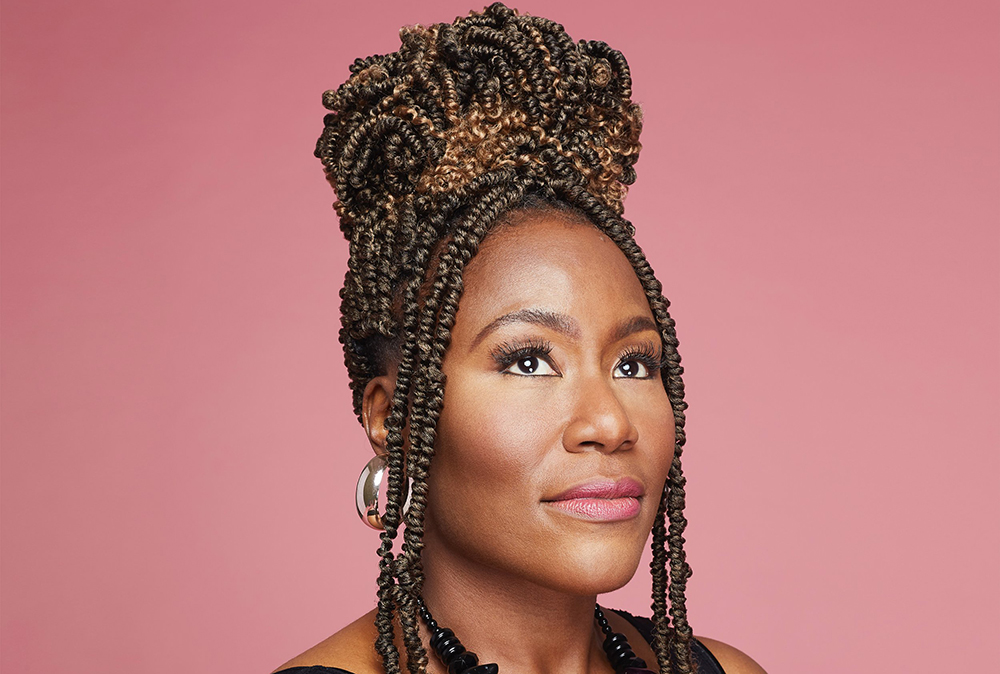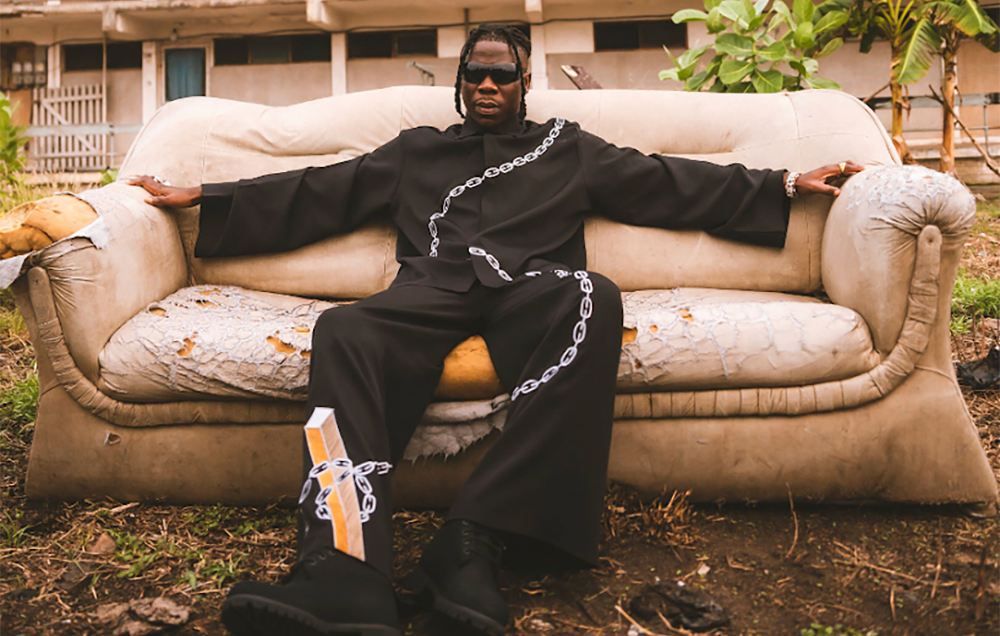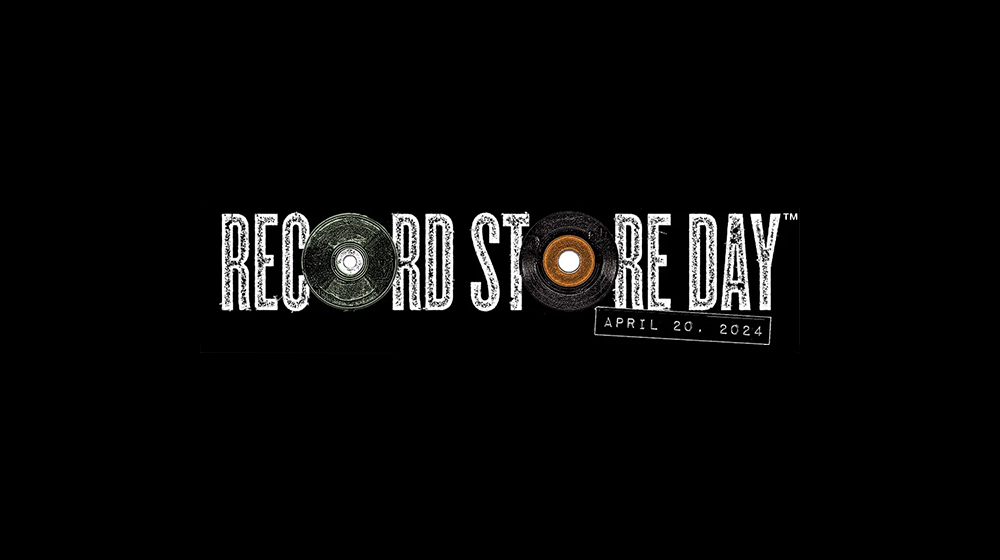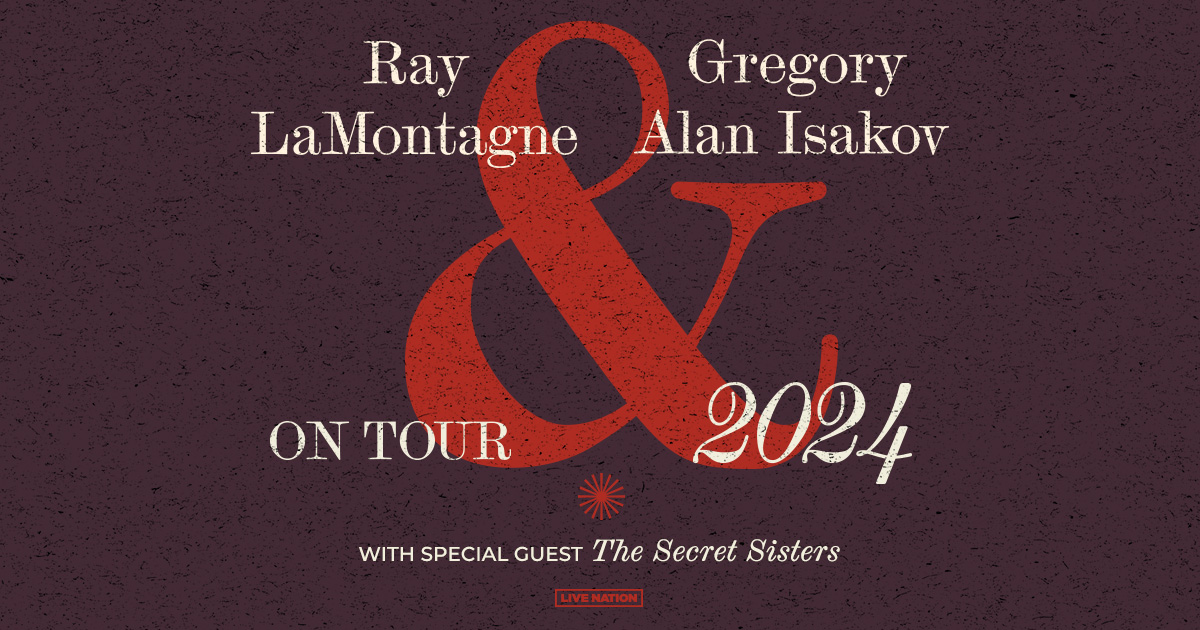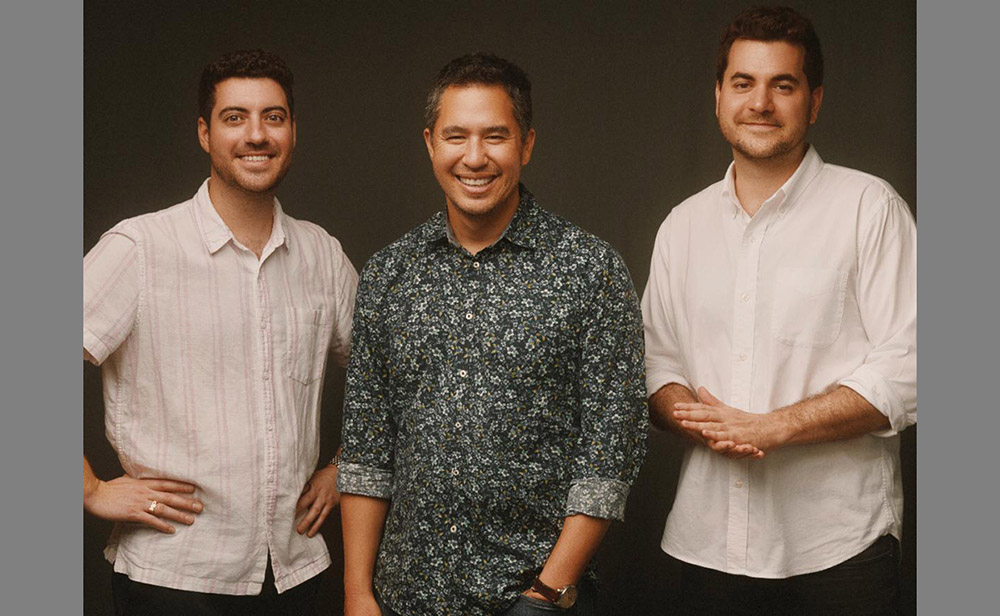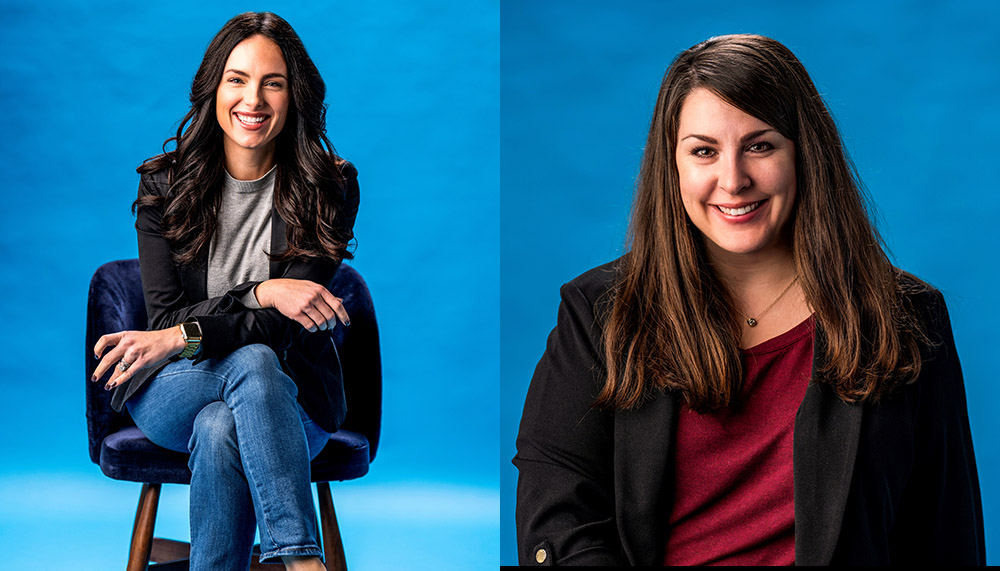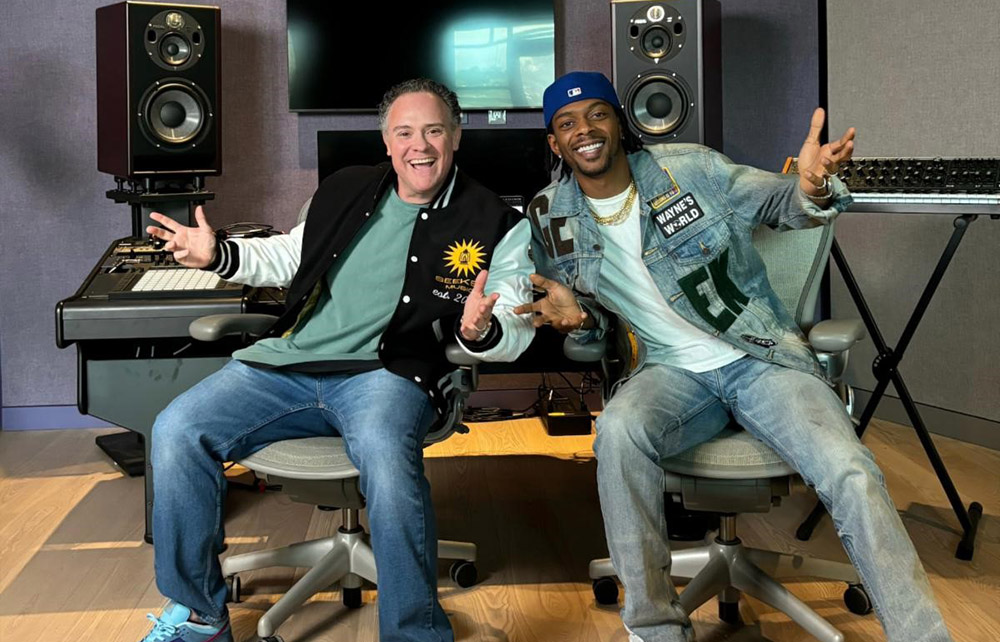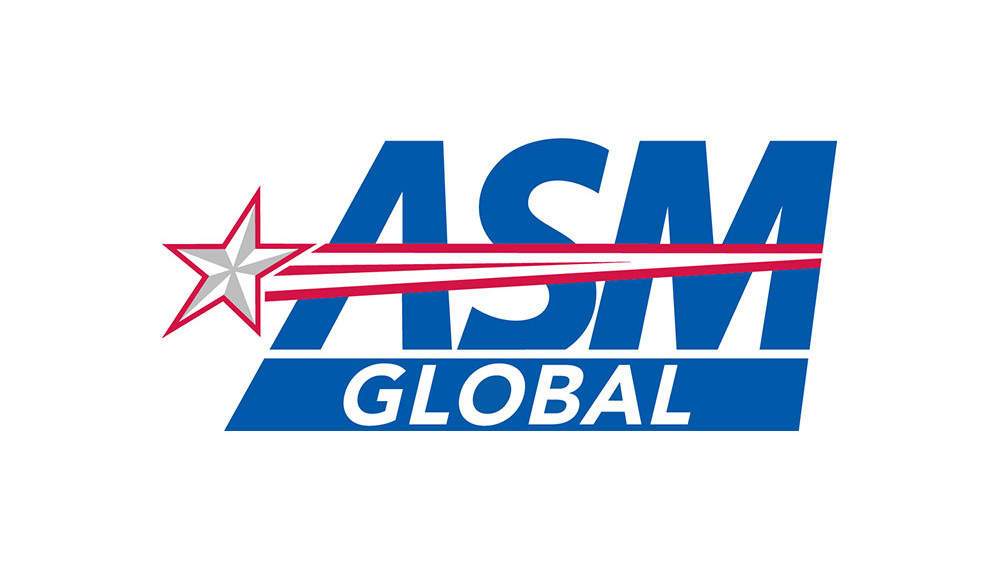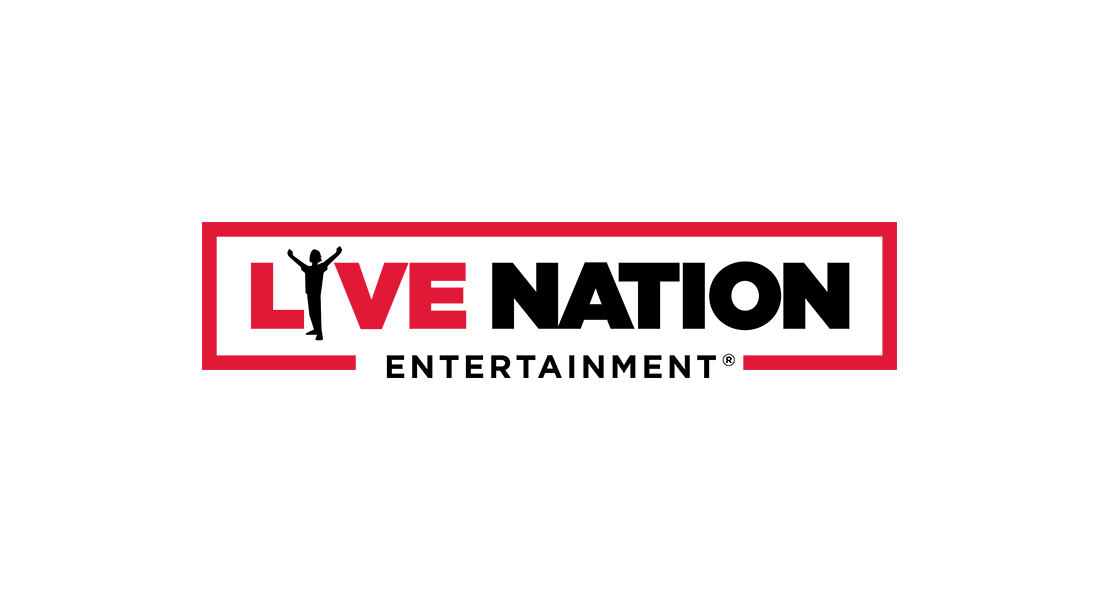This week In the Hot Seat with Larry LeBlanc: Mitch Schneider, president, The Mitch Schneider Organization.
If a tree falls in a forest unnoticed it may mean that this patch of forest isn’t a client of The Mitch Schneider Organization.
Amid a landscape of 24/7 entertainment news cycles, and immediate direct-to-fan communication on social media, Mitch Schneider is the last of an era: An old-school publicity legend who has been confidant to some of this generation’s biggest music stars, including David Bowie, Tom Petty, Aerosmith, Fleetwood Mac, Ozzy Osbourne, Heart, and countless others throughout his 40 years flacking for his clients.
Headquartered in Encino, California, with an office in Nashville, The Mitch Schneider Organization (MSO) handles music, culture and lifestyle projects with a client roster encompassing rock, country, electronic and pop.
From the Bronx, New York, Schneider quietly entered the music industry in the ‘70s as a freelance music journalist for, Good Times, Crawdaddy, Hit Parader, Circus, and Rolling Stone.
He moved to Los Angeles in 1979 to become a music publicist for the prestigious entertainment PR firm, Solters/Roskin/Friedman. In 1982, he returned to freelance music journalism, subsequently joining Michael Levine Public Relations in 1984. He became a partner there in 1988, resulting in the company being renamed Levine/Schneider Public Relations.
In 1995, Schneider launched The Mitch Schneider Organization.
For an independent music PR firm, MSO has been around for an impressively long time.
It’s because we have had a footprint in many different (musical) genres in changing times. Certainly in 1999, Year 1 of Coachella, that bill was 80% electronica, and this was before EDM had cracked through the mainstream. So I’m looking at all of these bands like the Chemical Brothers, Underworld, and Lamb. I come back to the office after we were all out there (at the Empire Polo Club in Indio, California), and I said, “We’ve done Faithless. We’ve done Praga Khan. I did the David Bowie remix EP ‘I’m Afraid of Americans’ with Nine Inch Nails which was all electronica. We need to go deeper here (with EDM).” Somebody said, “I know this woman, Alexandra Greenberg.” She comes to us in 2001 (as senior VP) and brings us firmly into electronica which becomes a big part of MSO, and remains a big part of our company.
We are always looking for the next thing.
For some of our new accounts, we are doing this app called SINGLE MUSIC which allows artists to collect money better. We just signed on with the Repost Network (which offers SoundCloud monetization, content protection, and profile features), and they are helping artists to collect money from SoundCloud. I love the idea that we are helping musicians to get paid in an environment where sometimes babysitters make more money than those Spotify checks do for a certain artist.
How many people on staff at MSO?
In Los Angeles, we are 10 and one in Nashville, and that’s Lyndie Wenner. Lyndie (as Nashville executive dir. of MSO) is running point, and myself and various publicists will work on various accounts that come out of Nashville like Tommy Emmanuel, and the Jerry Douglas Band. Another way that Nashville has been pivotal for us is that Scott Welch, who used to manage Alanis Morissette, is involved with the SINGLE MUSIC app. He introduced me to Repost Network and SINGLE MUSIC, and I had the meeting with them in Nashville. So Nashville is so important to us. Not just for country music but for other aspects. I go to Nashville a few times a year. I happen to love country music. It started for me with the Byrds, the Buffalo Springfield, and Poco.
Lyndie had worked with you at Solters/Roskin/Friedman after you arrived in Los Angeles in 1979.
Yes, we knew each other at Solters. Then when she moved to Nashville in ’94, she said, “Mitch I know you have Dwight Yoakam and some other country acts, but keep your eye on having a Nashville office one day.” We did open it up 10 years ago, and it’s really been important for us because it’s keeping us fresh and diverse. Lyndie is pivotal to MSO
Also pivotal to MSO, it would seem, is Marcee Rondan who goes back with you to Levine/Schneider Public Relations in the ‘80s.
Yes, Marcee is also pivotal. She’s executive vice-president of the company. Marcee was an intern, and then she became my assistant. She was in my office, and she saw a book on the group X, and she said, “That’s my favorite group.” I said, “Well, that’s my favorite group.” It was one of those things. We instantly became friends because we loved X, and we have been working ever since. She grew to be a publicist and then an account executive.
The publicity sphere you entered in 1979 has long changed. Magazines and newspapers have come and gone while the internet brought about a new media ecosystem. There have been more changes in the past 5 years than ever before.
It’s rapid the change. For us, on one level, the big-ticket items that were always there remain as powerful, and as important. For instance, a morning TV show like “Good Morning America”; a late-night show like “Saturday Night Live”; and “Jimmie Kimmel Live!.” A major print story that is going to reverberate would be from the L.A. Times, the New York Times, and the Wall Street Journal. Those things are still in the mix, and when we were out pitching back at Michael Levine PR in ’84, these were the big looks. They remain the big looks.
Where PR has obviously changed is that the internet is massive, and there are so many different websites that are broken down by (musical) genre. If you have an alternative client, as we did with the comeback of The The, it was very important for them to have looks at outlets like Stereogum. That is definitely a big part of it. So it’s everything from the internet including podcasts. I did Robert Hilburn’s book on Paul Simon “The Life” that he recently issued, and one of the things that I told him was that we should do some podcasts. So we did the Adam Carolla podcast (“The Adam Carolla Show”), and that is an important look. So there’s more to do than ever before, and also there’s verifying internet requests from various outlets from across the country. It’s not only national, but it’s also regional tour press requests, and some have, maybe, 50 views per day, and some of our artists don’t want to go to the places for a 50 views per day website. Then again, you might have a smaller client who needs it. So, as a publicist, you cannot be dismissive of smaller websites because they may be of use to your smaller clients.
When Ryan Schreiber launched his online music magazine Turntable in 1995, it was slow to get off the ground. At first, the site was updated monthly with interviews and reviews. In May 1996, the site began publishing daily, and was rebranded as Pitchfork, and became an indie music marketing essential.
They are absolutely key. They are tastemakers. Do you know what is interesting? When we were doing the PR for Coachella–we were the PR for the first 12 years of the festival before Goldenvoice took the project in-house–I remember walking around Coachella asking young people, “Where do you get your music from?” A lot of people were telling me back then, maybe this was 6 years ago, “Oh, Pandora. Then, if I hear something that I like, I will type their names into the internet.” So they were telling me that they were not following, say Rollingstone.com which is massive. They were going into the rabbit hole of the internet based on what Pandora was telling them. That’s how much things have changed but Rolling Stone is important, especially now that Rolling Stone is back to being oversized, people do want to be on the cover. And being on their website is key.
Rolling Stone’s coverage includes many internal platforms.
Yes. For instance, if they decide to promote your client’s video, they will not only do it on their website but they have a newsletter that I believe reaches 300,000 people a day via their subscriber base on the web. And, also they will post it on their Facebook, Instagram, and Twitter. So you get so many looks for the client. And I believe—and this is how I do PR now––the sweet spot is that you have to figure out how to intersect publicity and social media. That is like one plus one equals three. And, if you can do that, then you are really doing your job. So just getting a piece on a website or a premiere of a video on a website, okay, but you have to figure out how to add all of these elements together.
The hip-hop community really has that covered. Artists like Drake, Jay-Z, Kanye West, and Nicki Minaj galvanize their fan bases by utilizing social media along with more traditional media.
Yeah, it’s funny how that world is very social media-driven, and they are all clever enough to know that when we hear about fights or squabbles in the hip-hop world that I think they are done with both parties knowing what they are doing. It’s like heavyweight wrestling.
Then an artist releases a track about the squabble which is followed by even more social media spitting and gouging.
Yes, and it just goes on and on. It is what I call the square root of infinity. It is sort of crazy, and it is so distracting from the music itself, but it’s the modern world, and people figure it out. Their brands can be just as important as a media brand, and it’s very influential how a lot of those particular artists will run their campaigns like that.
So many dynamic American publicists I’ve worked with over the years have been ladies, including Melani Rogers, Martha Moore, Marilyn Laverty, Laura Swanson, and Sarah Mary Cunningham to name a few.
My respect for my female peers is completely huge, and they have been so pivotal to MSO, and before that with Levine/Schneider PR. Their attention to detail is remarkable. Not only MSO’s Marcee Rondan, Alexandra Greenberg, and Lyndie Wenner, but all of the female publicists I’ve known through the years like Tresa Redburn, Kristine Ashton, Kim Kaiman and others.
Being in Los Angeles, you have long pitched your clients to your TV and film industry contacts as part of a campaign. In pitching or even trying to gauge social media or music streaming playlists isn’t that a fine line that you step over these days?
I think it is a fine line, and I will tell you why. Spotify does have curators to put these playlists together that are very influential. It is not essentially the job of a publicist to get their artist on Spotify. There are companies that do that, and they may have certain relationships with some of those curators. But that is really not our function.
That said, music publicists have traditionally gone beyond the job’s guidelines. You do what you have to do to gain coverage. Perhaps, if you are working with a major label act, they can pitch curators directly or hire outsiders to do the job, but if you are working with an unsigned artist or one on a smaller independent label, you might have to cover off that work.
I’m happy you brought that up because I was writing some notes before our call, and I wrote something called “Artists Without Managers and Labels.” For instance, a band like The The, we wanted a really big look for them in Los Angeles, and there were various offers. They did take the one from KCRW for “Morning Becomes Eclectic” for them to do a performance and an interview. That is something that the radio departments of labels will do for major acts; but because I am working with various artists who don’t have labels or who don’t have managers in certain cases, yes as a publicist, you have to jump in there, and you have to have relationships with outlets that used to be the exclusive domain of the label. For instance, we do know some curators of Spotify, and we can say things; but curators will put on what they want. But, yes to your point, as a publicist you have to cut a wider swath now than before because your artist, again, may not have the big label affiliation or have a big manager who might be able to pick up the phone and call.
Back when I got into the business, I would pitch the “Tonight Show” for a client, say I was pitching Melissa Manchester or Leo Sayer, but I remember their manager Michael Lippman saying, “Just make sure that that you tell the agent what you are doing.” Back in the day, the agent used to pitch TV, but that changed through the years, and it became in the domain of the publicist, and that gave more fuel to the field of publicity.
Can you remember a time when weekends were relatively quiet; when you’d only get the odd business-related phone call; maybe a band member got arrested or an interview fell through and had to be rescheduled? Today publicists are expected to be on call 24/7.
Yep, I made peace with it years ago. I remember the Everly Brothers’ representative calling me on a Sunday, “Mitch, the guys can’t do the phoners tomorrow.” So I had to quickly jump into phone action to say, “We have to move these. I will be in touch with you about rescheduling.” So you would get that. It’s not like looking down at your phone now, and people expect you to reply immediately. I remember Larry, in the early days of the internet, that you would get an email from a client on a Sunday, and it would say, “Sorry to bug you on the weekend but…” I forget the last time that I saw an email from a client that said, “Sorry to bug you on a weekend.” It’s not that they are mean. They just figure that you are lit up 24/7 otherwise I would have taken a government position.
I made peace with it. I’m not angry.
Now on a weekend, I look down at my phone, and there are people saying, “I need a photo pass.” Back in the day, they would call Monday to Friday, and it (the request) would get routed to the tour publicist. I’m a nice guy. I reply to people. I was looking down the other day for the Smashing Pumpkins, and the Magpie Salute—we are not working with either at this time—but, I just said, “We are not working with the band. Here’s the current contact,” just to give people a response because I’m that kind of guy. I’m not just going to delete it (the request) because some clients aren’t with me anymore. Clients come and go. It’s just the way of the business.
Then there are emails and texts from overseas that come in the early morning hours.
Oh, it’s true.
There’s such an abundance of bands and artists today that it’s near impossible for a music journalist to keep up. Genres have broken down into subgrouping; few bands have slipped away completely; and there’s wave after wave of new acts. Today, you have to go to 3 or 4 shows a night…
Just to keep up. Back in the day when I was with Crawdaddy, they’d give me an album by the Fania All-Stars, and even Chick Corea. You were expected to be fluent in various things. I could review Ted Nugent for Rolling Stone; I could review the O’Jays for Crawdaddy, and they might give me the Village People to review. But that all changed when punk and new wave happened. All of a sudden there was an avalanche of new indie record labels. At that point, it became too hard keeping up with everything.
You are renowned for taking an old-school approach to luring journalists out to events.
(Laughing) Yeah. This is my thing as a publicist. I say that my job is to put vibe into a bottle and spray the universe with it. That’s what I do. I call people up, and I say, “I have something here that may resonate with you.” If I try to get people to come to shows–I’m very old-school—I will say, “Let’s have dinner before the show.” I do maintain very old-school relationships with writers. Some say, “Mitch, nobody asks me out for dinner, but you.” A manager, sometimes they look at the guest list, and there’s only three names on there. I have to explain to them, “Do you realize for a journalist to come out, who may not even be getting paid for a review, they have to park their car? That can be $15. You are competing with other bands playing that night. You are competing against what people are watching on Netflix.”
I also don’t want to go to a show during the week where the headliner comes onstage at 11 PM.
One of my favorite venues in the city is The Hotel Cafe because they will do showcases where the artists are on at 8:30 PM or 9 PM. Whenever I can, I tell a journalist, “Why don’t you meet me at kitchen 24 across the street at 7 PM? It’s our treat.” Maybe the artist that is playing will stop by for a quick handshake. “Then we will walk into the show together.” We do try to do that. But it’s not easy getting people out to shows. Part of our job is to explain that to managers—and they are looking at us like, “There should be more people on this list.” I say to them, “I agree, but here’s the background.” So we have to manage the manager’s expectations. That’s part of our job too.
My idea of hell is an L.A. showcase at the Whisky A Go-Go or The Viper Room without at least two drink tickets.
If we are going to have a band there, we will have an MSO tab going, and I will ask the journalist, “What do you want to drink? There’s no drink tickets but we have you covered.” My attitude is that if someone shows up to a gig, that’s like winning a lottery ticket. I tell this to managers. When we give guest lists to managers or labels, we have a regret section where people have said, “Mitch sorry, I’m seeing this band that night,” or “Sorry, I’m picking my daughter up from school that night.”
The recording industry was the first media sector to feel the full impact of the Internet, and technology-empowered consumers. We continue to face a borderless global ecosystem where monetization can be erratic. In essence, you are a freelancer in this world. Is collecting fees from clients, often under financial duress, challenging?
Yes, sometimes you will have to come up with a payment plan. I have to be open to that if somebody says, “The money that I thought I was getting from iTunes or Spotify isn’t what I thought it would be.” You have to be flexible. We have worked with some festivals that went belly-up, and I got stiffed. There are some people in this town who have stiffed me, but their previous companies went bankrupt, and I wound up working with them again. You are out in this town, and you are sometimes shaking the hands of people who owe you money. It’s the way it is. It’s like the phone companies. Some people are going to pay, and you are going to get stiffed every so often.
Are there people you won’t work with?
There are some people, yeah, if it was completely an adversarial scenario I wouldn’t choose to work with them again, but I do have sympathy for some people who have gone legitimately belly-up. Some of those people have done payment plans with me, and they made it right.
Traditionally, it had been the label which called the shots on publicity.
It depends. You can get an account for a major label, and they may tell you “Don’t pitch TV because we are going to do that.” But it’s not really just about ego. Booking a TV appearance is going to cost a lot of money. Sometimes they don’t want an independent publicist out there just pitching blindly when the label might not have the money to facilitate the booking or they are planning to use the money in another area or they are planning to book TV later in the campaign or whatever. So yes, it just really depends. Every account is going to be different.
Are you often given leeway over campaigns based on your relationship with a client? In some cases, say with Ozzy Osbourne, Joe Perry, and previously David Bowie, you have been there longer than other players. In some cases, artists have passed through several labels and managers. At some point, someone might say to you, “Mitch, you have been with this artist a long time. What do you suggest?” As well, while major labels were once far more territorial overseeing artists on their rosters, they are working with about one quarter of their staff today.
That’s totally true. Yes, and as you said, a lot of the artists that we have been with for a long time like Joe Perry of Aerosmith, Ann Wilson of Heart, and Ozzy. These are people we’ve been with for a long time. So representatives will check with us and say, “Can you check with the artist.” One thing that also changed the world of publicity from years ago is definitely email. I remember back in the day that if you wanted to talk to your artist, the manager would patch you into a phone call. You never seemed to get that artist to yourself. With the advent of email, that has changed. I did (David) Bowie for 21 years, from 1991 to the end of 2012, and he was always ahead on the internet. So, aside from my phone relationship with him, there was an email relationship. You were always on target with him because that’s just the way that it happened. He would ask very specific questions about which particular writers I was thinking of reaching out to first for a campaign.
My wife Anya Wilson worked for David early in his career, and I interviewed him in the ‘90s after doing considerable research. It was, I thought, a great interview but when I listened to the tape of our conversation, I realized that I had very little of real substance. How many artists are as media astute as David was?
He was very smart. David’s father was a public relations man for a charity. So David knew everything about publicity. I learned so much about publicity from working with David Bowie. That was one of the great things about being with that organization; with him and Coco (Bowie’s PA for 40+ years, Corinne “Coco” Schwab, who reportedly was left $2 million in his will). Even though I was in the mix by 1991, and I had been doing PR for 10 years, they made me sharper in every possible way. It was a great relationship. I was the last publicist in Bowie’s career that was setting interviews for him. After 2012, he then put out “The Next Day” album in 2013, and there were other PRs engaged but he wasn’t doing interviews.
(David Bowie’s father, Haywood “John” Jones, worked as a promotions officer for Dr. Barnardo’s Homes the UK’s largest children’s charity.)
In conversation David was wildly funny, a trait the public rarely saw.
Oh, the funniest. He was really special. I remember one time that he was playing in Los Angeles (in 1995) with Nine Inch Nails. It was the arena tour when they were touring together (as the “Outside” tour). He wanted to end it on a real high note in Los Angeles so he came up with the idea, “Well, we should play The Hollywood Palladium on Halloween.” He goes, “So Mitch, what should we call it?” He would engage with me as a publicist. So I said, “I don’t know, Pagan Halloween Ball.” He goes, “Great. That’s the name of the event.” So you were really able to work with him. He would really draw upon your mind. There was no filter of a manager because with David’s career there were management consultants; and there were agents, publicists, and Coco. He really treated people equally. By my having that relationship with an artist one-on-one, that made me a much better publicist.
(After splitting from Tony DeFries of MainMan Management in 1975, David Bowie took full control of his career. At the time of his death, he had amassed a fortune estimated to be at least $170 million, including luxury properties and the rights to his recordings.)
Have Sharon and Ozzy Osbourne always been astute about media as well?
Yes, without a doubt. Sharon Osbourne, for instance, in the very early days of Ozzy—I came on in 1987—with some clients we would be pitching television crews to come to the shows, get 60 seconds of the first two songs. For Ozzy, she clearly said, “Do not invite media crews because what is going to happen is that they are going to come into the venue; they will be shooting Ozzy; and they are going to turn their camera to the audience, and get film of a kid drunk, and passed out, and it will be on the news: ‘It’s 10 PM, do you know where your children are?’” She was very astute in ways like that. She didn’t want the media to play into the sensationalism. It is no different with an electronica event. That’s why at most electronica events, there are no TV crews roaming unescorted. You get one shot of someone passed out on the floor having some kind of drug reaction or whatever, and that becomes the face of the event. You don’t want that. So with things like that Sharon was very pointed, and it was always about getting respect for Ozzy, and working with the right media.
Did you work with Ozzy and Sharon during their wildly popular MTV show “The Osbournes,” which ran from March 5th 2002 to March 21st 2005?
I worked with Ozzy from 1987 to 1999. It started when I was with Michael Levine. Then Ozzy and Sharon came with me at MSO in 1995. They were with us for four years and they left in 1999. They then came back in 2005, and they have been with us since. So I missed the TV show years.
Quite a contrast in Ozzy’s media profile after the TV series?
Oh, I remember a publicity promo trip in New York City in 2005 doing interviews, and running around doing promotion, I could not believe it. He was getting stopped everywhere. He said, “Mitch, it’s the TV show.” He knew. It took him to a whole other level of his career.
Similar to “An American Family,” the 1973 PBS documentary of the Loud family, Ozzy had been a celebrity beforehand, but with the TV show Ozzy, Sharon, and their kids, Kelly and Jack, became mega-brand celebrities.
Oh yeah. At that point, you escalate from music to pop culture overall, and everything changes in an instant at that point.
Through the years you have handled PR for the likes of Korn, the Black Crowes Green Day, X, Slipknot, and Everclear. As well you have been part of the launches of numerous leading music festivals including Coachella in 1999; Stagecoach in 2007; Rock On The Range in 2007, among others. As you mentioned earlier, you handled publicity for Coachella for its first 12 years, but like several other festivals, it now controls its own publicity.
And the C3 Festival, they have their own PR people doing it. Our festivals include via LiveStyle, Electric Zoo, and All My Friends Music Festival; Ozzfest; Made In America which is the Jay-Z festival; and Eddie Vedder’s festival Ohana which is in Dana Point California.
What does it entail doing PR for a festival? Attaining advance press, and then being on site 24/7 during the event?
Yes. When you do festival PR, especially when it is onsite, let’s say that you have a festival starting on a Friday, often you will fly in on a Wednesday. Thursday is the walkthrough day to see the site; determine which photographers are being credentialed; and then you are embedded through the full weekend.
And that’s intense.
But the festival PR starts earlier. It’s not only about increasing its national profile, but it is almost becoming embedded early on with the local media because they are going to be supportive and, if there are any community complaints about the festival, you are going to be working with those daily newspapers, and you have to have good relationships with them.
One of the things about doing festival PR is the first thing that you have to do when you get there–and on the day that a headliner is playing—you have to make sure you meet the road manager, and the tour manager because whatever the publicist may have told you 5 days ago may have changed. The artist may say, “I don’t want more than two photographers in my pit.” So we will find the road manager because their own publicist might not be on site with the artist, and we will say, “We just want to check. This is what we have.” We have had—no names here—various tour managers of artists say, “We are going to leave it to you. You pick three photographers, tell us who you want, and we are going to look at it.”
It’s not unlike being on tour where, as a publicist, you re-check interviews with media for the next few shows after preparing in advance. At the venue, you again check with the road manager or tour manager who might say, “They don’t want to do five interviews anymore. They are blowing off three of them,” and you then adjust the interview schedule accordingly.
Yeah, it’s l being really on top of your game at that point, and being able to be very strong, especially when you are dealing with sleep deprivation. You have to be really gracious with everyone which is part of a PR position anyway. But you are dealing with road managers who might be equally sleep-deprived, and they might be short-fused. You basically have to say, “Welcome to our festival. What do you need from us? How can we help you? We are here to make your job as easy as possible.” Once you say that, people really lighten up.
Any other festival publicity tips?
Make friends with the security guards in the photo pit because you are going to have your photographers in-and-out, and you want them to be treated well. I will say, “My name is Mitch Schneider. We run PR for the festival”—and I will show my credentials–“Happy to be working with you today. We are going to have photographers in-and-out. There are some bands that only want a few photographers. We are here to manage that. But when we walk out of the pit after three songs, we need you to continue to make sure that nobody slips in.”
There are times in-house security will say, “I don’t care what you were told, you aren’t doing that here.” You are then forced to figure out alternative strategies.
The whole thing, everything, is always changing.
When you moved to Los Angeles in 1979 to become a music publicist for the entertainment PR firm, Solters/Roskin/Friedman you worked with one of entertainment’s most revered publicists, Lee Solters.
Yes. One of the best. Here’s the genius of Lee Solters. First of all, he would do a staff meeting every day. There was no internet then so how do you stay connected? He once said, “If someone is jumping off a bridge, you need to ask yourself, ‘How can I involve my client?’”
That line of thought no doubt inspired you to come up with the concept of Ted Nugent making a bogus offer to buy Muzak in the ‘80s; and when the Sex Pistols reunited in 1996, you suggested they offer to do a benefit concert for Princess Diana, then in the midst of divorce negotiations with her husband, Prince Charles. The Pistols sent her a telegram. They got a “no comment” from her, and a truckload of publicity.
Yes. It was all of that. Lee would just say, “Look at a current event, and figure out how you can involve your client. So yes about Ted and Muzak. I was reading USA Today’s Money section, and it said that Muzak was going up for sale. So I called (Ted Nugent’s longtime manager) Doug Banker, and Ted and I said, “I have this crazy idea. Why don’t we offer to buy it? They will decline us because we will come in lower than the asking price”—which was in the USA Today story—“and we will say that they declined us. And we will also say that the reason that you wanted to buy it is that you wanted to destroy it because it ruined the best minds of a generation.” It was really funny. The story was all over the place. I remember Bryant Gumbel talked about it on the “Today” show ” without Ted even having to do an interview. That’s when you know that you have made your mark; when a story is in the news, and your client doesn’t need to be there to do the interview. That was just really amazing.
(Lee Solters—who died in 2009—was one of the last of the old-school Broadway and Hollywood press agents, representing the likes of Cary Grant, Gregory Peck, Mae West, Yul Brynner, Claudette Colbert, Frank Sinatra, Carol Channing, Barbra Streisand the Beatles (he handled their first U.S. tour in 1964), Dolly Parton, Paul McCartney and Wings, Led Zeppelin, the Muppets, Michael Jackson, Whitney Houston, the Eagles, Yul Brynner, and Broadway impresario David Merrick).
Lee Solters had a daily requirement for his publicists: Turn in at least one news item daily.
For Lee, it was about items. He’d say, “You have to have items about your clients. You gotta be pitching (syndicated newspaper columnist) Cindy Adams. You got to be pitching whatever outlets are available There are radio stations and columnists. That’s how you keep your artist in the press year round, up and above projects that they release. It’s your job to keep them visible all year, and by keeping them visible all year, you can get paid year round.” Lee was always trying to find a hook for an artist.
As opposed to being hired campaign by campaign.
Yes, he would say that as a publicist you had to come up with a campaign that is bigger than their chart position. “They are a celebrity. They are year-round.” I remember pitching Melissa Manchester or Leo Sayer, and I would get them items in the Chatter section of People magazine when they ran that back in the day. That was really big because so many media folks and the public would read that, and then radio stations would say, “Melissa Manchester said in People magazine……” It really schooled me knowing that you have to be intensely creative and…
Lee’s strategy was inspired by the immense popularity of such entertainment newspaper columnists as Walter Winchell, Ed Sullivan. Hedda Hopper, Louella Parsons, Rona Barrett, and Liz Smith.
Yes. And it was like, “There are a lot of people out there to write about, but if you are going to be an interesting person, what’s your story? How is it going to be more interesting?” It’s like when I got the Everly Brothers their star on the Hollywood Walk of Fame in 1986. Right away, I said, “That’s nice, but who’s giving it to them? What’s my photo?” It’s always, “What’s the photo?” Lee taught us, “You gotta have a photo. You have to have an item. You gotta have a catchy quote. You have to think about these things. Suggest it to your client. If they are unavailable to come up with something, suggest a quote to them, and see if they are okay with it.” Lee was influential in making me who I am.
(When Korn was seeking an idea to launch their 2007 tour for their “See You On The Other Side” album, Schneider proposed a graveside press conference at the Hollywood Forever Cemetery, followed by a party at the mausoleum there. Axl Rose came out–his first public sighting in years–resulting in a fantastic photo op for Korn.)
One of the reasons I was attracted to working with Michael Levine was that Michael came out of that old-school also.
(One of the biggest names in the Hollywood PR world, Michael Levine founded Levine Communications Office in 1983. His first clients were stand-up comedians David Brenner and Joan Rivers. Levine later represented Sandra Bullock, Michael J. Fox, Demi Moore, Charlton Heston, Barbra Streisand, and comedians George Carlin, Sam Kinison, and Rodney Dangerfield. He has appeared as a contributing media expert on such shows as “The Today Show,” “Nightline,” “Good Morning America,” CNN, Fox News, ABC News, MSNBC, and PBS.)
Michael could come up with photo opportunities that were so amazing. Deidre Hall was a soap opera actress (best-known for the character Marlena Evans in ”Days of Our Lives”), and she had an annual lunch that she did for her fans. Michael would say, “Okay, let’s say that Deidre Hall is going to the supermarket to get all of the ingredients for this luncheon for the fans.” He would have 15 photographers get a shot of Deidre Hall in a supermarket buying stuff. It was a way to promote the event.
Michael had these incredible (contact) lists.
When we signed Sheena Easton, it was when “Sugar Walls” (from her 1984 album “A Private Heaven”) was happening, and we did an event at Chasen’s where the record company (EMI) gave her a gold or a platinum record, and we had 35-plus photographers there. Her manager Harriet Wasserman said, “Where did you find all of these photographers? Sheena Easton has never been in a room in America with this many photographers.” Michael Levine had what we call “the paparazzi list.” They were not the stalker paparazzi. We would just call it “the paparazzi list.” So we would do these things and have major coverage. So people came to see that I was sort of the rock and roll guy, but I was schooled in “old-school PR,” and that really contributed to Michael and I. Michael was working with actors and actresses…..
Your first client when you started with Michael was the Everly Brothers?
Yeah, it was the Everly Brothers, and then Rita Coolidge, and then a big supporter of mine…
Danny Goldberg?
Danny Goldberg at Gold Mountain Entertainment. He gave us the Textones, Bruce Cockburn, Keel, and Peter Wolf. There were so many clients he brought. He was really pivotal for me in getting more prestigious clients. Everything really changed for me. I was doing PR for the Everly Brothers for a few years, and I pitched them three years running to get a star on the (Hollywood) Walk of Fame You would think that it would be given, but there was politics. There were waiting lists. So it took me a few years to get it. Then I get it for them. The first thing that occurs to me is, “Who’s going to give them the star beside (radio DJ and TV producer) Johnny Grant, bless his heart, the old honorary Hollywood mayor. I always knew that having a woman in a photo—this is old school PR—was great. I thought “Well, Linda Ronstadt (in 1975) had covered their 1960 hit, ‘When Will I Be Loved,” so she should present the star to them. She was unavailable. The next person on my list was Paul McCartney because he wrote a song for the Everly Brothers, “On the Wings of a Nightingale” which was the signature single from their 1984 album “EB 84,” but he wasn’t coming to America at that point. It was too close to the John Lennon’s (1980) killing. So he wasn’t keen on making the trip, which is what we were told. Then I remembered reading that Tom Petty was a fan of the Everly Brothers. So I called his office, up and I spoke to Mary Klauzer at East End Management, and I said “The Everly Brothers”—and I had checked with them—“would be honored if Tom would be available, and be at the event and present it to them.” It was like one of those Everly things that in 5 or 10 minutes you get a phone call back saying, “Yes, yes, yes. Whatever you need Tom to do he will.”
So the morning of the event I meet Tony Dimitriades (who managed Tom Petty for 42 years, until his death on October 2nd, 2017), and he said, “Here’s Tom. Just tell him what you need him to do.” Tony trusted me. I said to Tom, “You can say as much as you want or as little as you want. We are just delighted that you are here.”
You went on to oversee Tom Petty’s publicity.
A few months after that event Tom’s management indicated that they were looking for new PR for Tom, and they remembered me. Patrick Goldstein at the L.A. Times told Tony Dimitriades, “Mitch does not really have the clients in Tom Petty’s league, but I am telling you, he’s the guy for Tom.” So I signed Tom Petty, and Tony was working with Stevie Nicks, and he said, “Do you want to go in for a Fleetwood Mac meeting?” I said, “Yeah.” So I go into the meeting, and they asked, “Who else do you handle?” And I said, “Tom Petty.” I had just signed him a few days before. Then I go into another meeting with Ozzy Osbourne, and I was asked who I handled, and I said, “Well, I handle Tom Petty” and that was great. Then I go into a meeting with Trudy Green for Heart, and she asked, “Who do you handle?” And I said Tom Petty, Fleetwood Mac, and Ozzy Osbourne.’ So she said, “Great. You will be wonderful for Heart.” She liked me. So it was in the month of March ’87, it was like some kind of comet came in, and I really went on the map.
Then a few months later I had another (client surge) with Yes, Kiss, Whitesnake, and Gloria Estefan in another period. All of a sudden, I just came from the back or the middle of the bus, and I got to the front. People ask me, and I ask myself, how did I do it? I think because there was no internet. There was less noise coming at me.
You also had Wang Chung and Paul Anka as clients. Paul Anka?
That was more Michael’s client. When I joined forces in 1984 with Michael, he said, “Well, I have Paul Anka. Paul is performing around the country plus Las Vegas. Why don’t you focus with him a little bit more?” So we were putting him a little bit more into some of the trade magazines like Billboard that he hadn’t been in.
You were working with Michael Levine when he was Michael Jackson’s publicist during his 1993 civil trial when he was accused of molesting an underage teenager.
Yes. Because of various confidentialities, I really did not know what Michael Levine was doing with Michael. I don’t know if they made him sign (non-disclosure agreement) stuff.
Still, you had a front-row seat watching someone handling PR under an intense media glare just prior to O.J. Simpson murder trial.
I feel like that came later.
No. Michael Levine was Michael Jackson’s publicist in 1993 and 1994 when you were working with him.
I would almost turn my head to it. I was in the world of the Cult, Jane’s Addiction, Soundgarden, and David Bowie. When it came to Michael Jackson I never went into that world. Right. I don’t even remember which events that Michael Levine was working with Michael Jackson on because it was pretty exclusive.
You started playing guitar when you were around 12?
Yeah. I was really super young.
You are 62. So you grew up in an era of great New York radio including with DJ Pete Fornatale at WNEW-FM who helped usher in a musical alternative to Top 40 AM radio in the city.
He made me the biggest Poco fan in the world. He played them, and I went to see Poco in ’71. I was 15. They played Carnegie Hall. Album number three, “From The Inside” had just come out, and I remember Rusty Young on the steel guitar, and it blew my head off. A few weeks later I went to Manny’s Music on West 48th Street, and I bought a Sho-Bud Maverick pedal steel. I still have it.
It is hard learning to play pedal steel.
It was hard. What was harder was keeping it in tune because this predates electronic guitar tuners. I think that I spent more time trying to keep it in tune than actually coming up with riffs.
You didn’t get as good as Tom Brumley?
He’s one of my favorites. His steel playing on Rick Nelson’s “In Concert at the Troubadour, 1969” (which also included Randy Meisner, Allen Kemp, and Patrick Shanahan performing 4 dates at The Troubadour in Los Angeles), oh man.
(Tom Brumley was with Buck Owens and the Buckaroos in the 1960s, and he played on such landmark Owens’ recordings as “Together Again,” “I’ve Got a Tiger by the Tail” and “Act Naturally.” He spent a decade with Rick Nelson. His pure steel guitar sound was known as “The Brumley Touch.”
In 2011, Ace Records in the UK issued a remastered version of “In Concert at the Troubadour” on two CDs with 30 bonus tracks, and a booklet.)
Rick Nelson’s death in a plane crash on New Year’s Eve 1985 was a tragic finale that led to rock and roll immortality. However, Rick Nelson and his Stone Canyon Band, along with the Byrds, the Flying Burrito Brothers, Chris Hillman, Gram Parsons, Linda Ronstadt, and Michael Nesmith, largely invented the country rock subgenre. Nelson, however, is largely uncredited for his contribution.
Dwight Yoakam gives him credit all of the time on his radio show (“Dwight Yoakam and The Bakersfield Beat”) on SiriusXM Radio. He talks about the importance of Rick Nelson being a bridge between rock and country. And it’s so true. Randy Meisner is pivotal. After he leaves Poco, he goes to Rick’s band before he goes to the Eagles. What Randy did for Rick Nelson was to give him that unison singing that pivotal to the sound of the Everly Brothers.
So here you are a Poco fan growing up in the Bronx in the ‘70s. Any other musical great moments?
I used to read the Village Voice, and in 1971 there was something written about the New York Dolls. They weren’t signed yet. The Voice wrote something, and I told my friends, “We should go.” They had a residency on Sunday nights at the Mercer Arts Center. The day was Columbus Day which meant we were off from school. So I said to my friend, “Let’s go.” We went and, of course, two kids from the Bronx were like deer out of headlights in a very Warholian hipster scene, but that was really remarkable to me. I remember that they sounded like a messier J. Geils Band in women’s clothing and make-up. It was just so brash and funny.
Another pivotal moment in your musical development was going to the Fillmore East for a show an amazing bill of Delaney & Bonnie headlining followed by Mott the Hoople, and the Brooklyn band Mandrill.
What’s interesting about that show is that the headliner was supposed to be Free, but they had their visas denied and Delaney & Bonnie became the replacement headliner, and that’s not chopped liver. It was Mott the Hoople when “Rock and Roll Queen” (1969) was the hit. It was before David Bowie gave them “All The Young Dudes” (1972), and changed their career. Yeah, I went to the Fillmore East when I was 15. That was like going to a religious house of worship. It was so intense. And I got the chance to go for the show opened by Edgar Winter’s White Trash, and up next was Albert King and B.B. King. The back story on that was Johnny Winter was supposed to be the headliner, but he wasn’t at the show. Years later I would read that he was in rehab at the time.
After you saw Lou Reed perform at the Capitol Theatre in Passaic, New Jersey, you wrote a review of the show and sent it to Good Times (now in its 50th year) which was starting up, and they printed it.
I always tell people who ask “How do you get ahead in this business?” That you have to create a space for yourself where there is none. Nobody is going to make it for you. So I go to see Lou Reed at the Capitol Theatre. “Rock ‘N Roll Animal” (1973) had just come out, the live album, and it was like a high-octane version. I was so moved by the performance. I thought it was outrageous and everything so I wrote a review. I sent it to Glen Brunman the editor at Good Times which was then in Jamaica Queens. He called me, and said,” We are starting a newspaper in New Jersey, and the fact that you went to that show is perfect because I need New Jersey events. Your review is not that great but I’m going to run it.” Then he called up two weeks later, and said, “I have some albums here. Would you like to review them?” The first album I reviewed was “Eldorado” by Electric Light Orchestra. And that’s how it all started for me.
You became the editor of Good Times.
For one summer. In 1975.
You later wrote for such music publications as Crawdaddy, Circus, Hit Parader, and Rolling Stone. Writing record reviews?
Yeah. I got all of these Philadelphia albums, Harold Melvin and the Bluenotes, the O’Jays, Three Degrees, MFSB, and I thought that I should write something about these 4 records in a capsule review. And I sent it to John Swenson at Crawdaddy, and he called up, “I like this. I’m going to run this. What else would you like to review?” So all of a sudden I’m in Crawdaddy. Then I sent my stuff to Circus and (editor) Paul Nelson, bless him, said, “I dig this. I am going to give you more (assignments).” So I started writing reviews for Circus. Paul became the record review editor of Rolling Stone, and he brought me there. I remember in ’78 a record review would get me $75. If they didn’t run it, you got a “kill fee” of one-third of that. That’s what it used to be, but it was a great (career) gateway.
It’s interesting that I was doing reviews of people I would go on to handle as a publicist. I gave R.E.O Speedwagon’s “You Can Tune a Piano, but You Can’t Tuna Fish”(1978) a positive review. I gave Ted Nugent’s album, “Weekend Warriors” (1978), a pretty positive review by Rolling Stone’s review standards. So years later when these artists would come into my midst when I crossed over into publicity I would say, “I was the writer who wrote about you in Rolling Stone” and they were surprised. I was younger than the other writers. I think that I had an understanding of heartland rock. I just got it.
An elitism existed in rock music journalism in that era.
Where the elitism came from—and I’m not trying to defend it; I’m trying to understand it—I think it was because the mainstream media was just so lame. A lot of it (coverage) was teen-driven. I think that they (music journalists) tried to bring sophistication to it (music coverage) and, certainly with artists like Bob Dylan and the Velvet Underground they were bringing in European ennui and (Franz) Kafka and all that. So they had to step up, and I think that’s where the elitism came from.
Another side of you is being a country music songwriter who has worked in Nashville.
Yes, So here’s the deal. I have about 50 songs right now. Randall Wixen of Wixen Music Publishing is involved with me. I have been to Nashville, and I’ve written songs with Mando Saenz. who has songs on Miranda Lambert’s albums and with Lee Ann Womack; I’ve written a song with Adam Wright (who has written songs for Garth Brooks, Alan Jackson, and Lee Ann Womack).
(Wixen Music Publishing administers compositions by numerous high profile songwriters, including Tom Petty, Neil Young, the Byrds’ Roger McGuinn, Chris Hillman, the Beach Boys, Townes Van Zandt, Stevie Ray Vaughn, the Black Keys’ Dan Auerbach, Jonathan Richman, and Rage Against the Machine’s Zach De La Rocha and Tom Morello, among many others.)
Are you getting warm to winning the lottery as a country songwriter?
Yeah, One of my songs “Wheels Came Off” is in a movie called “Off The Record.” I wrote it with Aaron Beavers, frontman of the Austin group Shurman. It’s coming out on Amazon Prime (subscription service). The song was recorded in (actor/producer) Jimmy Quill’s studio. He remembered it, and he said, “Would you let me use the song?” We said, “Sure.” The film takes place in Austin, Texas.
Larry LeBlanc is widely recognized as one of the leading music industry journalists in the world. Before joining CelebrityAccess in 2008 as senior editor, he was the Canadian bureau chief of Billboard from 1991-2007 and Canadian editor of Record World from 1970-80. He was also a co-founder of the late Canadian music trade, The Record.
He has been quoted on music industry issues in hundreds of publications including Time, Forbes, and the London Times. He is co-author of the book “Music From Far And Wide,” and a Lifetime Member of the Songwriters Hall of Fame.
He is the recipient of the 2013 Walt Grealis Special Achievement Award, recognizing individuals who have made an impact on the Canadian music industry.

